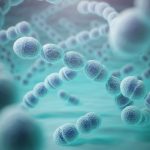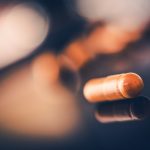Photo by Lukasz Szmigiel on Unsplash
Spring is slowly showing its face, but it is never too early to think about hay fever, especially for those – about one in four of the adult population, who are quietly praying for rain as pollen counts rise in the warm spring weather. Start early, and you can reduce or even prevent symptoms “springing up”. There are plenty of over the counter drugs available to reduce the symptoms of hay fever, but their side effects can be numerous also. Our body use these signs to tell us there is something wrong. Simply suppressing them can lead to further complications down the line.
The Root of the Problem
But why is it that some people are affected while others aren’t? Well, genetics might play a part – but believe it or not, it is mainly down to what is in your gut. Over 70% of our immune cells reside in our digestive system and the gut microbes are responsible for the fine balance between our cellular and humoral immunity. Cellular immunity takes care of faulty cells and invaders inside the cells, while the humoral immunity fights off larger invaders and all the enemy before they get inside the cell, namely in our mucus membranes, blood and lymph. In hay fever – as in any allergies, the humoral immunity is overactive, resulting in large amount of histamine release against a harmless compound such as grass pollen.
This hypersensitivity can be related back to the first months of life when our immune system is established. 1,2 In pregnancy, the cellular immunity is suppressed naturally – so the mother’s body wouldn’t reject the growing foetus. Neonates therefore are biased toward humoral immunity dominance and require cellular immunity through the microbes of the birth canal, breastmilk and their environment. Research shows that if the mother lacks good amounts of beneficial bacteria, or the infant is caesarean born, bottle fed and grows up in an over-hygienic environment, the cellular side of the immunity has little chance to mature, leading to all sorts of allergies and immune disorders in childhood, or later on in life.3
Antibiotics and other medications further interfere with the natural flora; it has been shown that a single week of broad spectrum antibiotic can reduce our diversity and set the balance out for over a year!4 Stress, bad dietary choices and alcohol are all play a part in interfering with the bowel flora and our immunity.5 Lack of Vitamin D3 so common in Ireland has been also linked to immune problems6 – so make sure you get your GP to test your levels and supplement with a good quality cod liver oil.
Natural Solutions
The best way to tackle hay fever therefore is to balance the two sides of the immune system; supply the body with beneficial bacteria and create an environment for them in which they can colonise and work for our benefit. Several clinical trials have been conducted in the last decade using probiotics as treatment with mostly positive outcomes.7-10 Most of these studies supplemented different types of single strains for between 4 weeks to 6 months during hay fever season and found reduction in clinical signs as well as the need for medications. Only one study looked at supplementing all year round, which reduced the overall episodes.15 Unfortunately, only a few studies looked at the effect of a diverse multi-strain probiotic on hay fever as of yet,13,14 which have been found more beneficial in fighting pathogens16 and other conditions, such as IBS,17 whilst researchers agree that the altered diversity of the microflora seem to be a crucial factor in allergies.18
All allergy symptoms are the result of inflammation, the natural response of the immune system, therefore eliminating pro-inflammatory foods like sugars, alcohol, trans fats is a good start. Replace these with anti-inflammatory essential fats and antioxidants from oily fish, avocado, soaked nuts and seeds, strong coloured vegetables and fruits, herbs and spices. Bromelain from pineapple (the tough part in the middle is especially rich) is a natural enzyme to reduce inflammatory messengers.19
Support the mucous membrane lining of the respiratory tract by introducing gentle herbal teas with anti-histamine properties such as nettle20 or soothing and immunomodulatory licorice and peppermint.21, 22 Carotene-rich foods like dark green and orange colored vegetables can help to strengthen the mucus membranes covering the respiratory system.23
Quercetin; found in red onion, red apple, red cabbage and vitamin C from lemon, orange, tomatoes, peppers, and parsley are both natural anti-histamines to help ease the symptoms without side effects.24,25 These antioxidants can also be taken in supplement form – alongside the diet, 2-4 times a day between meals to bring great relief. The combination of methionine – an amino acid from fish, meat and Brazil nuts along with the vitamins B6, Folate and B12 are needed for the methylation pathway – a process that clears up excess histamine.26
Certain eye drops form a barrier in front of the eye, preventing pollen to get access, while nasal rinses with saline solutions can remove aggravating trapped allergens. Practice these several times a day during hay fever season.
Remember – it is better to work on prevention than struggle with the symptoms! So, optimise your Vitamin D levels and the diversity of your gut flora throughout the year and enjoy next springtime to the full! Contact me to find Your ‘root’ to better health!
References:
1, DiGiulio DB. 2012. Diversity of microbes in amniotic fluid. Semin Fetal Neonatal Med 17: 2–11.
2, de Kivit, S. et al. 2014. Regulation of intestinal immune responses through TLR activation: Implications for pro- and prebiotics. Front Immunol 2014: 5; 60
3, Seo JH, et al. 2015. Interactions between innate immunity genes and early-life risk factors in allergic rhinitis. Allergy Asthma Immunol Res.;7(3):241-8.
4, L. Dethlefsen et al. 2008. The Pervasive effect of an Antibiotic on the human gut microbiota, as revealed by Deep 16S rRNA Sequencing.; PLOS Biology, Nov 2008, vol 6 (11)
5, Blaser, M.J. 2014. Missing Microbes – How the overuse of antibiotics fuelling our modern plagues, Henry Holt and Company LLC
6, Benetti, C. et al. 2015. Therapeutic Effects of Vitamin D in Asthma and Allergy. Mini Rev Med Chem;15(11):935-43.
7, Nagata, Y. et al. 2010. Improvements in seasonal allergic disease with Lactobacillus plantarum No. 14. Biosci Biotechnol Biochem. 74(9):1869-77.
8, Wassenberg, J. et al. 2011. Effect of Lactobacillus paracasei ST11 on a nasal provocation test with grass pollen in allergic rhinitis. Clin Exp Allergy. Apr;41(4):565-73.
9, Singh A, et al. 2013. Immune-modulatory effect of probiotic Bifidobacterium lactis NCC2818 in individuals suffering from seasonal allergic rhinitis to grass pollen: an exploratory, randomized, placebo-controlled clinical trial. Eur J Clin Nutr.; 67(2):161-7.
10, Zajac AE, Adams AS and Turner JH. 2015. A systematic review and meta-analysis of probiotics for the treatment of allergic rhinitis. Int Forum Allergy Rhinol.;5(6):524-32
11, Peng Y, Li A, Yu L and Qin G. 2015. The role of probiotics in prevention and treatment for patients with allergic rhinitis: A systematic review. Am J Rhinol Allergy.; 29(4):292-8.
12, Güvenç IA, et al. 2016. Do probiotics have a role in the treatment of allergic rhinitis? A comprehensive systematic review and meta-analysis. Am J Rhinol Allergy ; 30(5):157-175.
13, Dennis-Wall JC, et al. 2017. Probiotics (Lactobacillus gasseri KS-13, Bifidobacterium bifidum G9-1, and Bifidobacterium longum MM-2) improve rhinoconjunctivitis-specific quality of life in individuals with seasonal allergies: a double-blind, placebo-controlled, randomized trial. Am J Clin Nutr.;105(3):758-767.
14, Del Giudice, M.M. et al. 2017. Bifidobacterium mixture (B longum BB536, B infantis M-63, B breve M-16V) treatment in children with seasonal allergic rhinitis and intermittent asthma. Ital J Pediatr.; 43(1):25.
15, Giovanni, M. et al. 2007. A Randomized Prospective Double Blind Controlled Trial on Effects of Long-Term Consumption of Fermented Milk Containing Lactobacillus casei in Pre-School Children With Allergic Asthma and/or Rhinitis. Pediatr Res 62: 215–220.
16, Chapman CMC, Gibson GR and Rowland I. 2012. In vitro evaluation of single and multi-strain probiotics: Inter-species inhibition between probiotic strains, and inhibition of pathogens. Anaerobe, 18(4): 405-13.
17, Yuan, F. et al. 2017. Efficacy of Bifidobacterium infantis 35624 in patients with irritable bowel syndrome: a meta-analysis. Current Medical Research and Opinion; 1473-4877.
18, Melli, LC. et al. 2016. Intestinal microbiota and allergic diseases: A systematic review. Allergol Immunopathol (Madr).; 44(2):177-88
19, Rathnavelu V. et al. 2016. Potential role of bromelain in clinical and therapeutic applications. Biomed Rep.;5(3):283-288.
20, Roschek B Jr, Fink RC, McMichael M, and Alberte RS. 2009. Nettle extract (Urtica dioica) affects key receptors and enzymes associated with allergic rhinitis. Phytother Res.; 23(7):920-6.
21, Yang R, Wang LQ, Yuan BC, Liu Y. 2015. The Pharmacological Activities of Licorice. Planta Med.; 81(18):1654-69.
22, Inoue T, Sugimoto Y, Masuda H, Kamei C. 2002. Antiallergic effect of flavonoid glycosides obtained from Mentha piperita L. Biol Pharm Bull.; 25(2):256-9.
23, van der Horst-Graat JM, Kok FJ and Schouten EG. 2004. Plasma carotenoid concentrations in relation to acute respiratory infections in elderly people. Br J Nutr.; 92(1):113-8.
24, Mlcek J, Jurikova T, Skrovankova S, Sochor J. 2016. Quercetin and Its Anti-Allergic Immune Response. Molecules.; 21(5). pii: E623
25, Johnston CS, Martin LJ, Cai X. 1992. Antihistamine effect of supplemental ascorbic acid and neutrophil chemotaxis. J Am Coll Nutr.; 11(2):172-6.
26, Maintz, L. and Novak, N. 2007. Histamine and histamine intolerance. Am J Clin Nutr.; 85: 1185-1196.



